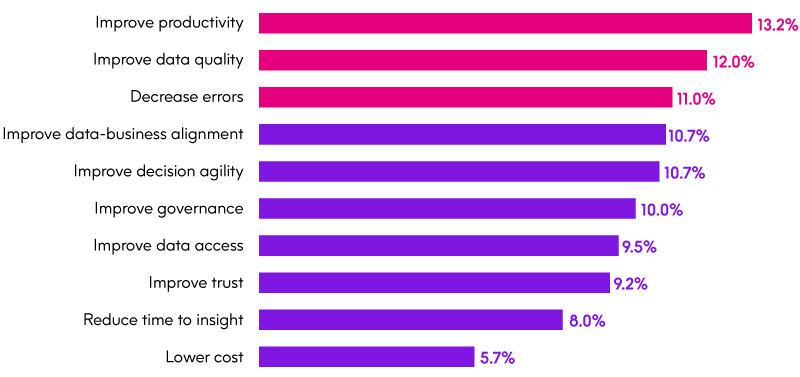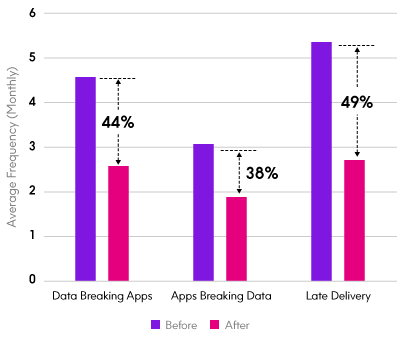Infographic
Data Observability
What is data observability?
Data observability is the ability to understand, diagnose, and manage data health throughout the data lifecycle.
What it means for you, is the ability to be more proactive in tackling your data problems.
Artificial intelligence identifies data anomalies in real time, helping you take action faster and prevent costly downstream issues.
Data observability is a foundational capability of data operations1
By 2023, 60% of organizations will have begun implementing DataOps programs to reduce the number of data and analytics errors by 80%, increasing trust in analytic outcomes and efficiencies of Gen-D workers.2
1Gartner, Data and Analytics Essentials – DataOps”, Thanaraj, May 2021
2IDC FutureScape: Worldwide Data and Analytics Predictions, October 2021
Top DataOps Drivers

Source: DataOps Survey, IDC 2021, N=401
60%
By 2023, 60% of organizations will have begun implementing DataOps programs.
80%
This will lead to an 80% reduction in data and analytics numbers.
Source: IDC FutureScape: Worldwide Data and Analytics Predictions, October 2021
Impact on Exceptions

Source: DataOps Survey, IDC 2021, N=401
“I want to drive value from data, and I want to drive high velocity in my data team. We had a lot of apps breaking data, and we had a lot of data captured in source systems, breaking downstream systems. To really drive insight to action, we need to reduce the number of exceptions happening in data pipelines.”
CDO, Online Retailer in the UK
What’s driving data observability?
Data observability has a big role to play in helping organizations achieve key objectives.
Here are just a few of the top drivers.
87%
of CXOs said being an intelligent enterprise is their top priority
IDC Data Culture Survey 2021
83%
of executives have articulated the need to be more data driven compared to before the pandemic
IDC DataOps: The Foundation for Enterprise Intelligence Sep 2021
62%
of practitioners are expected to make data-driven decisions – 75% of mid to upper management
IDC Data Culture Survey 2021
33%
of people fully agree that the speed of their organization’s data and analytics group’s response to business end users’ requests meets end-user expectations.
IDC Data Culture Survey 2021
Lack of data observability in action
We’ve covered the ins and outs of data observability, but maybe you’re still not sure why you need it. Here’s one example of how an unnoticed error can spiral and cause downstream issues that can go unsolved for months.
A 3rd party vendor sends a data file late, missing the upload to your internal system.
Error goes unnoticed.

March
Downstream, the analytics reports show a steep drop in sales revenue for the prior month.

April
The CEO is alarmed at the steep drop in revenue and calls an emergency meeting.
Sales leaders say they are not seeing a drop in their sales.

May
IT discovers the missing file is the cause of the issue.
Once rectified, reports show sales had actually INCREASED, but time was wasted.

June
With data observability, the issue could have been caught immediately – saving the organization time, confusion, and headaches.
Stop bad data in its tracks
Prevent bad decisions by using data observability to alert your teams about potential issues before they have downstream impacts.
89%
of organizations view DataOps as “important, very important, or extremely important.”
The Precisely Data Integrity Suite:
Data Observability module
We’re here to help you power better decisions with data observability.